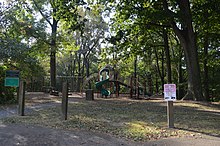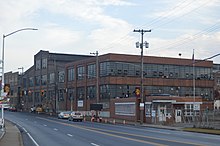
Cutlery includes any hand implement used in preparing, serving, and especially eating food in Western culture. A person who makes or sells cutlery is called a cutler. The city of Sheffield in England has been famous for the production of cutlery since the 17th century and a train – the Master Cutler – running from Sheffield to London was named after the industry. Bringing affordable cutlery to the masses, stainless steel was developed in Sheffield in the early 20th century.

A switchblade (aka switch knife, automatic knife, pushbutton knife, ejector knife, flick knife, flick blade, or spring knife is a type of knife with a sliding or pivoting blade contained in the handle which is extended automatically by a spring when a button, lever, or switch on the handle or bolster is activated. Virtually all switchblades incorporate a locking blade, where the blade is locked against accidental closure when the blade is in the open position. It is unlocked by a mechanism that allows the blade to be folded and locked in the closed position.
A gravity knife is a knife with a blade contained in its handle, and that opens its blade by the force of gravity. This mechanism of opening is fundamentally different from the switchblade, which extends its spring-propelled blade automatically upon the push of a button, switch, or fulcrum lever. The main purpose of gravity opening is that it allows opening and closing to be done one handed, in situations where the other hand is occupied. Hence, historically they have been issued to parachutists to cut off caught lines, such as lines tangled in trees, a major potential use of the gravity knife.
The Laguiole knife is a traditional Occitan pocketknife, originally produced in the "knife city" of Thiers, source of 70% of France's cutting tool production, as well as the small village of Laguiole, both located in the Massif central region of France. Laguiole in this instance does not refer to the French knife brand but to a generic type of traditional slipjoint knife associated with this region of France.

The Camillus Cutlery Company was one of the oldest knife manufacturers in the United States as its roots date back to 1876. The Company produced millions of knives until it filed for bankruptcy in 2007. Its brand name and intellectual property rights were purchased by Acme United Corporation, which re-launched the Camillus brand in May 2009 using modern materials.

The Santoku bōchō or Bunka bōchō (文化包丁) is a general-purpose kitchen knife originating in Japan. Its blade is typically between 13 and 20 cm long, and has a flat edge and a sheepsfoot blade that curves down an angle approaching 60 degrees at the point. The term Santoku may refer to the wide variety of ingredients that the knife can handle: meat, fish and vegetables, or to the tasks it can perform: slicing, chopping and dicing, either interpretation indicating a multi-use, general-purpose kitchen knife. The Santoku's blade and handle are designed to work in harmony by matching the blade's width and weight to the weight of the tang and the handle.

Christopher Stanley Reeve is a South African-American knife maker, recognized as one of the most influential people in knife making history. Reeve founded Chris Reeve Knives (CRK) in 1984. In 2014, Reeve retired and was inducted into the Blade Magazine Hall of Fame in 2015.

Ontario Knife Company, also known as OKC, is an American manufacturer of knives and other edged and military tools.
Kershaw Knives designs, sources and manufactures a wide range of knives, including pocketknives, sporting knives, and kitchen cutlery. Kershaw is a brand of Kai USA Ltd., a member of the KAI Group, headquartered in Tualatin, Oregon, United States.
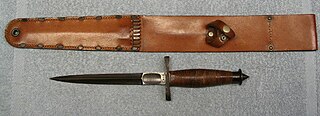
The V-42 stiletto was a stiletto and fighting knife issued during World War II to the First Special Service Force, a joint American/Canadian commando unit.
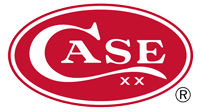
W.R. Case & Sons Cutlery Company is an American manufacturer of traditional pocket knives, fixed blades/sporting knives, kitchen knives, limited edition commemoratives and collectibles. The company originated in Little Valley, New York, around the turn of the 20th century, before relocating to its current home, Bradford, Pennsylvania, in 1905. The company's namesake, William Russell Case, first made knives with his brothers under the name Case Brothers Cutlery Company. His son, John Russell ("Russ") Case, worked as a salesman for his father's company before founding W.R. Case & Sons.
Imperial Schrade Corp. was an American knife manufacturer of hunting knives, pocketknives, utility knives, and bayonets during the 20th and early 21st centuries. The consolidation of five forerunner companies, including its namesakes, the Imperial Knife Company, founded 1916, and the Schrade Cutlery Company, founded in 1904, Imperial Schrade manufactured its products in the United States and Ireland and sold through hardware stores, department stores, and on military bases. The original company's fortunes declined and in 2004 it entered into bankruptcy where all equipment and intellectual property was sold off to reimburse creditors. The name and intellectual property was bought by Taylor Brands and used for marketing purposes.

The Cattaraugus Cutlery Company began as the New York distribution company J.B.F. Champlin and Son, founded by John Brown Francis Champlin and his son Tint in 1882. The Champlins expanded into knife production, and along with William R. Case and his brothers, they formed Cattaraugus Cutlery in 1886, based in Little Valley. The company hired expert cutlers from Germany, England, and other U.S. manufacturers, to produce high quality cutlery, and purchased knife-making equipment from the defunct Beaver Falls Cutlery Company. Admiral Byrd selected Cattaraugus knives to take on his expedition to the South Pole.

A grapefruit knife is a special type of knife designed specifically for cutting grapefruit. Grapefruit knives are small with a curved serrated blade, designed to hug the curves of the grapefruit. This is used to separate the outer edge of the segments from the rim of the fruit. The term "grapefruit knife" can refer to a type of knife with short, serrated twin blades about 2mm apart, used to separate the sides of each section from the dividing membrane. Some grapefruit knives incorporate both types, a double-sided curved blade on one side and the parallel twin blades on the other. Another type includes an angled tip and double sided serrated blade. When both types are used, the result is an intact-looking fruit with sections which lift out easily - especially if a "grapefruit spoon" is used.

The Western Knife Company was a manufacturer of hunting knives which began operations in Boulder, Colorado in 1911. The company is probably best known for its "Bowie" style hunting knives. The company was purchased by Coleman in 1984. Camillus Cutlery Company purchased Western in 1992. In February, 2007, Camillus closed as a result of bankruptcy due to competition from companies making cheaper knives in other countries. The Western brand and Camillus brand are now owned by the Acme United Corporation and manufactured in Asia.

A table knife is an item of cutlery with a single cutting edge, and a blunt end – part of a table setting. Table knives are typically of moderate sharpness only, designed to cut prepared and cooked food.
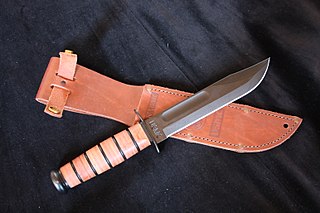
Ka-Bar is the contemporary popular name for the combat knife first adopted by the United States Marine Corps in November 1942 as the 1219C2 combat knife, and subsequently adopted by the United States Navy as the U.S. Navy utility knife, Mark 2. Ka-Bar is the name of a related knife manufacturing company, Ka-Bar Knives., Inc., of Olean, New York, a subsidiary of the Cutco Corporation.
William Wales Scagel or Bill Scagel was an American knifemaker whose style had a profound impact on the cutlery trade, influencing it for over 100 years.

The French Nail were locally fabricated and converted bayonets, knives and stabbing weapons for use in the First World War. These were crude stabbing spikes made by adding a point to a steel stake which had its rearmost section heated and bent into a crude handle.
Thomas Skinner was an etcher, inventor and amateur oil-painter in Sheffield, West Riding of Yorkshire, England. During the 1840s he invented a method by which the mass production of etched designs on steel blades could be facilitated by means of paper transfers. The British and American patents brought him a good income, but he devoted his life to developing the method. After he was widowed he was killed by arsenic poisoning at the hands of his housekeeper Kate Dover.




